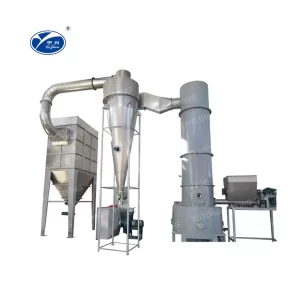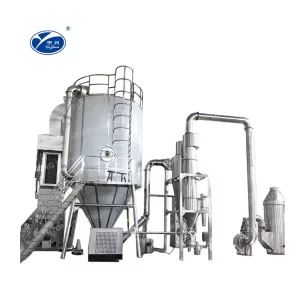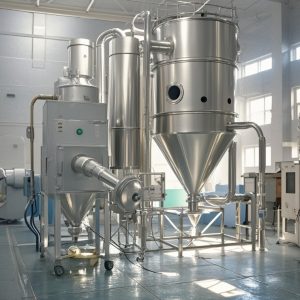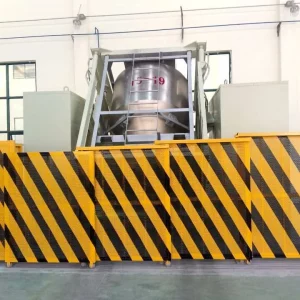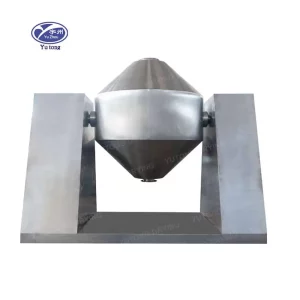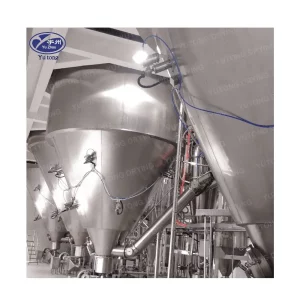Spray drying is an industrial process widely used in the pharmaceutical sector for the conversion of liquid formulations into dry powders. This technique offers numerous advantages, including the ability to control particle size and morphology, improve stability and bioavailability of drugs, and facilitate the formulation of dosage forms that meet specific therapeutic needs. This article delves into the principles of spray drying, its applications in pharmaceutical manufacturing, and the latest advancements in this field.
1. Principles of Spray Drying
The spray drying process involves atomizing a liquid feed into a hot gas stream within a drying chamber. The droplets formed rapidly evaporate their solvent, leaving behind solid particles. This is achieved through high-pressure nozzles or rotary atomizers that disperse the liquid into fine droplets, which then encounter hot air that evaporates the liquid phase almost instantaneously. The dried particles are collected at the bottom of the drying chamber, while the exhaust air is vented out after heat recovery and filtration.
2. Spray Drying in Pharmaceutical Applications
In the pharmaceutical industry, spray drying is employed for various purposes:
Formulation Development: It allows for the creation of solid dispersions, which can enhance the solubility and dissolution rate of poorly water-soluble drugs, thereby improving bioavailability.
Drug Delivery Systems: Spray drying facilitates the production of particles with controlled release properties, enabling targeted drug delivery systems that can reduce side effects and improve patient compliance.
Biologicals and Vaccines: The technique is used to stabilize heat-sensitive biological products and vaccines by forming amorphous matrices that protect the active ingredients during storage and transportation.
Excipient Modification: It can modify excipients such as lactose to improve flowability and compressibility, which is crucial for tablet and capsule manufacturing.
3. Advantages of Spray Drying
Particle Control: Spray drying allows precise control over particle size, shape, and porosity, which affects the physical properties of the final product.
Enhanced Stability: The rapid drying process minimizes thermal degradation, preserving the integrity of heat-sensitive compounds.
Continuous Processing: The technology supports continuous manufacturing, which can lead to higher productivity and lower costs compared to batch processes.
Flexibility: Spray drying can handle a wide range of feed compositions, from solutions to suspensions, making it versatile for different types of drug substances.
4. Challenges and Considerations
Despite its benefits, spray drying also presents challenges that must be addressed:
Process Optimization: Achieving consistent product quality requires careful optimization of parameters such as inlet temperature, feed rate, and nozzle design.
Cost: The initial investment in spray drying equipment and maintenance can be substantial.
Scalability: Transferring lab-scale processes to commercial scales can be complex due to differences in equipment design and operational conditions.
5. Recent Innovations and Trends
Recent advancements in spray drying technology have focused on improving efficiency, reducing energy consumption, and enhancing product quality. For instance, the use of advanced nozzles and improved atomization techniques has led to more uniform particle distribution. Additionally, computational fluid dynamics (CFD) modeling is increasingly being employed to predict and optimize spray drying processes, minimizing trial-and-error approaches.
In conclusion, spray drying plays a critical role in pharmaceutical manufacturing, offering unique opportunities to enhance drug performance and patient outcomes. As research continues to refine this technology, we can expect further improvements in the efficiency and efficacy of spray-dried pharmaceutical products.

